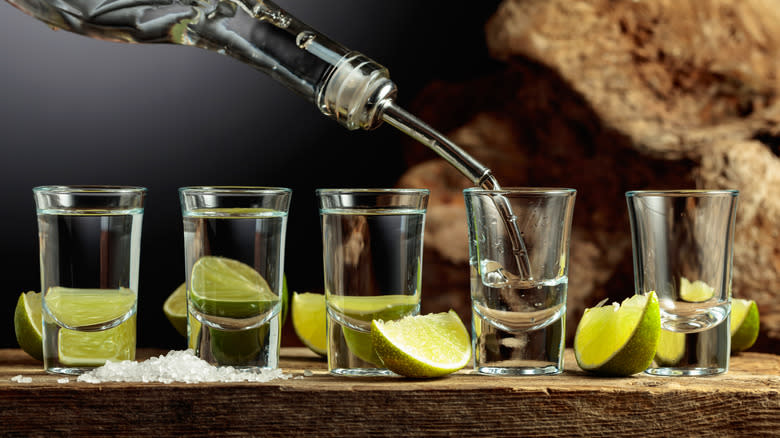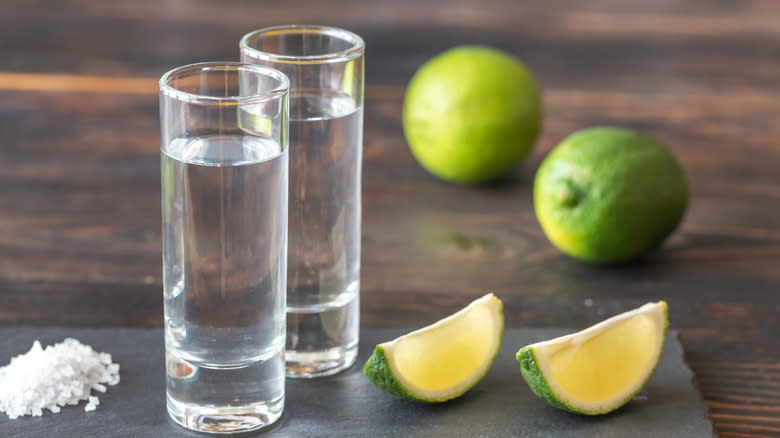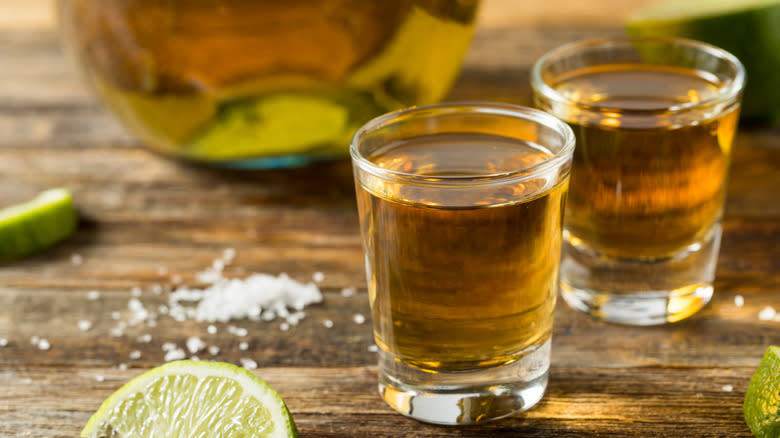The Main Difference Between Blanco And Reposado Tequila

If you're new to the world of tequila, the main thing you should know is that not all tequilas are the same, and the difference isn't simply in expense. First, you should familiarize yourself with the different types of tequila, with blanco, reposado, and añejo being the three main categories. Remember these names, and you'll be on your way to ordering drinks like a tequila pro. But what is the difference between blanco and reposado? The answer is time and age.
Blanco is the clear tequila that's probably the most familiar to many people. Think of reposado as blanco's older, cooler sister. Blanco is most often used in cocktails because of its mild flavor and often neutral profile in drinks like the Paloma. Of course, you can make any cocktail with a reposado, but that isn't the best use of this liquor, as the flavors are deeper and more complex and can simply be enjoyed on their own rather than buried in sugar and citrus juice.
Read more: The Ultimate Vodka Brands, Ranked
What Is Blanco Tequila?

Blanco tequila is bottled in its youth and therefore retains much of the flavors of the agave plant tequila is made from. Blanco is bright and citrusy, with just a hint of peppercorns. The longest that blanco can be aged before bottling is two months from distillation. If not bottled immediately, blanco is kept in steel barrels (unlike its counterparts aged in wooden barrels) so its flavor won't be influenced by oak notes. High-quality blanco can come across as floral or even fruity, while lower-quality blanco can taste a lot like kerosene. Let's just say blanco exists on a broad spectrum.
A tequila's quality is highly influenced by the agave plants it's made from. Agave plants, stripped and boiled down for their juice and sap, are distilled to make all tequilas. Blanco is the initial product of this process. For a higher quality blanco, look for brands made with 100% blue agave. And yes, you can get high-quality blanco good enough to sip. You may even encounter a joven tequila, which is blanco mixed with a little bit of reposado or añejo to give it a deeper flavor and color.
Reposado And Añejo

Reposado is a darker, richer tequila that has been aged between two and twelve months. Blanco is left in oak whiskey barrels to age and develop character, transforming it into reposado. If left longer, it will become añejo. Reposado, with its smokey vanilla flavor, takes on many of the qualities of whiskey due to the influence of oak and residual whiskey in the barrels.
Reposado and añejo tequila are often used in what's commonly referred to as a "Cadillac margarita," because these aged tequilas are considered higher quality than blanco. (This isn't always the case, but it's definitely the rule rather than an exception that reposado is superior to blanco.) These aged tequilas are great for sipping straight or enjoyed with a single ice cube — just as you would fine scotch or whiskey. Basically, you can think of reposado as the whiskey of tequilas, and if you're looking for a smokey, full-bodied tequila with spice and warmth, look no further.
Read the original article on Daily Meal

